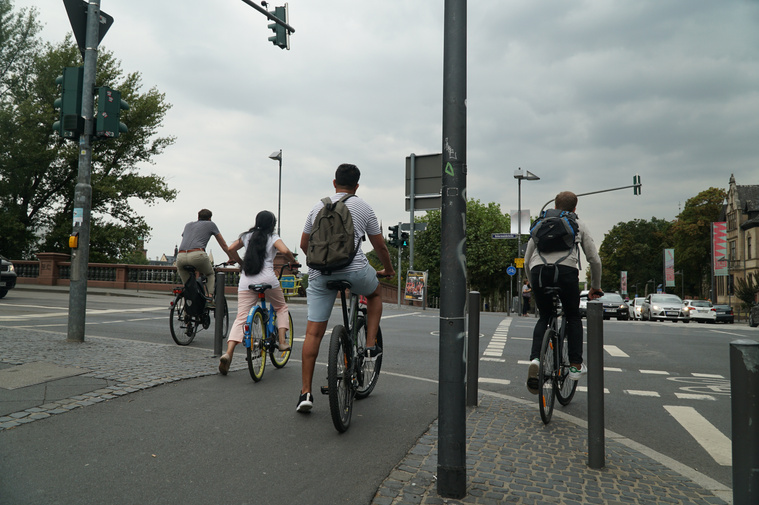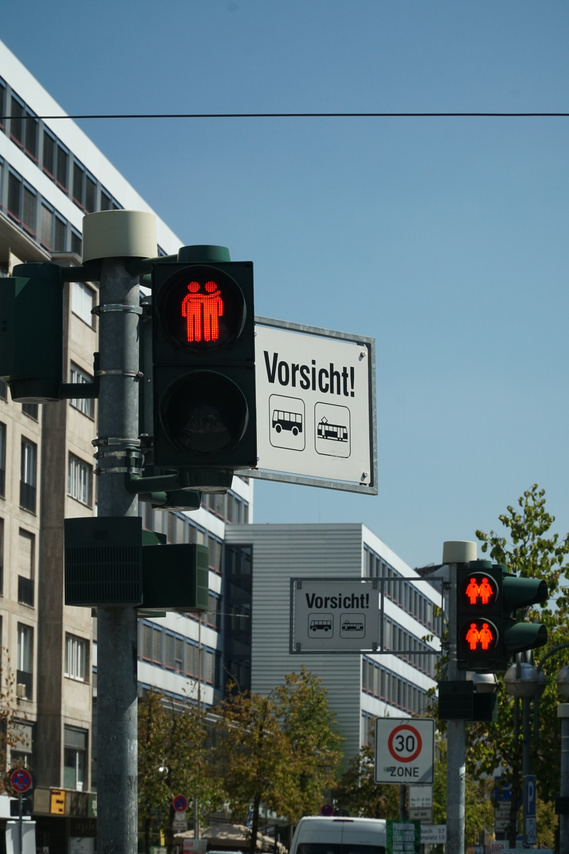Frankfurt am Main
August 15-17
City in Context
Frankfurt am Main is a home to nearly 700,000 of 684,000 inhabitants. In 2010, the estimated population of the urban area was 2,319,029. 324,000 commuters come into Frankfurt to work every day, most of them by car. It is the largest city in the German state of Hesse and is the beating heart of German transport, boasting a finely integrated public transport system, a major European air hub, a port, and high-speed rail connections all over Europe. Frankfurt international airport, which handles more than 145,000 passengers every day, Frankfurt central station and the airport station, alongside the A3 and A5 motorways which form the “Frankfurter Kreuz”interchange and carry more than 300,000 motor vehicles each day, together make the region one of Europe‘s key traffic hubs.
Located on the river Main, Frankfurt is known as the financial center of Germany as well as continental Europe. Firms have begun to build more skyscrapers in the city center with jobs shifting from London due to Brexit, and the European Central Bank is based in Frankfurt (see picture on the right).
Taken together, national and regional transit traffic, and business, commuter and tourist traffic in the city offer a challenge that sees traffic density reach the limits of the overall transportation
system’s capacity. The city is keen to reduce the environmental impact of traffic which impairs living and recreational conditions along the main traffic arteries. Inside the city, almost three quarters of all routes are now covered by foot, bicycle or by public transport (ÖPNV). Cars continue to predominate as regards transportation into and out of Frankfurt/Main, accounting for four fifths of the total, meaning that the Frankfurt cityscape is often shaped by automobiles.
To tackle this, the city government setup a traffic department to foster planning and work in the field of sustainable mobility. Called “traffiQ”, the organization deals with aspects of mobility management.
Frankfurt is working on multiple sustainable transport initiatives to cope with increased demand for local and regional travel, and it has extensive, multi-modal options for sustainable urban transport. Frankfurt and the region has prioritized the development of its tram and urban rail network, based on the public’s preference of rail systems over buses.
Frankfurt’s public transport system, including the underground (U-Bahn), trams, buses, as well as regional trains (S-Bahn), is accessible by a single, regional ticket thanks to an integrated tariff agreement overseen by the region’s tariff organization RMV. Frankfurt is a member of the RMV. The Schnell-Bahn connects the suburbs of the Rhein-Main Region to Frankfurt’s center, running at a frequency of every 15 to 30 minutes. Buses play a minor role in downtown Frankfurt since all major routes are already served by rail based modes of transportation. However, cross-town bus routes are used as feeder services to rail. This includes the city's nine subway lines known as the U-bahn, and another nine tram lines which operate at street level. With trams running as frequently as every 10 minutes, sections of track served by two lines see service every 5 minutes at rush hour.
Cycling in Frankfurt
The city features a 15% mode share for cyclists, thanks to developments like "bicycle streets,” partnerships in the “bike & business network", and bike-train intermodality.
Frankfurt is served by the nationwide “Call-a-Bike” public bicycle system operated by Deutsche Bahn. These bikes can be found at rail stations and at major intersections, and their self-locking mechanism can be released remotely by placing a phone call to a central dispatching service. This service has recently been supplemented by several dockless bikeshare providers as well.
As a whole, Frankfurt is certainly making more efforts to engage in creating cycling infrastructure that more equitably balances the modal split of the city. I visited the Deutsches Architektur Museum, which was coincidentally holding an exhibition about the best cases of cycling infrastructure in Germany and around the world. It was a reaffirmation that learning about different project contexts and success stories around the world can offer perspective to cities who wish to improve quality of life by reducing reliance on the private car and getting folks on the bike!
Polycentrism - Frankfurt as a Model for the City-Region of the Future
The city and region of Frankfurt is an anomaly in terms of breaking away from the traditional "monocentric" megolopis development model. Unlike the cities of London, Paris, Istanbul, and Mexico City- which have expanded to large regional cities but still dominate their hinterland out of the traditional "city center"- Frankfurt follows a "polycentric model" which has resulted from the growing of former single cities into an extensive city-region. This pattern is seen in the Randstad in the Netherlands, Southern California, and Greater New York (aka the Tri-State Area), among others. This type of development is important to understand in the context of transport, because transport planning can get exponentially more complicated (versus inflows and outflows from "monocentric" city regions) due to a wide variety of trips made across different centers. How does it work in the region of Frankfurt Rhine-Main?
The city of Frankfurt am Main in turn is the geographic heart of a polycentric area and is surrounded by major cities, such as Offenbach am Main, Wiesbaden, Darmstadt, Hanau, Rüsselsheim, Bad Homburg vor der Höhe and Mainz, all linked by a network of efficient road and rail connections. As a polycentric region, Frankfurt Rhine-Main is characterized by a non-hierarchical network of larger, medium-sized and minor towns and centers that together form a widespread system of decentralised centralization (some liken this type of development to a plate "huevos rancheros") bringing it with it the need to cennect these small and large centers via efficient transport networks.
As described in the City in Context section, existing transport networks have begun to reach capacity. In the pursuit of polycentric development, an alternative proposed for Frankfurt by development company Gateway Gardens GmbH is to begin more development at the city's air hub, Frankfurt International Airport. This so-called "Airport City" would be developed in a manner that offers the dense, diverse and complex network of opportunities, places, identities, people, and initiatives that already draw trips to Frankfurt am Main and Offenbach. The idea is to alleviate the stress on Frankfurt's city center by creating a "supernode." Rather than a one dimensional relation to Frankfurt, a multidirectional network between cities throughout the region and the airport will be established. The interaction between transit-oriented development at S-Bahn stops an the connecting trams linking to airport city will guide the development of a mixed-use Airport city. This is just one example of polycentric development that is being pursued in the city around mobility and housing in the Frankfurt Rhine-Main region.
Conversation with William Sugrue - Rail Expert
During my time in Frankfurt, I wanted to meet with someone who has the expertise of how complex rail-based transport is designed, constructed, operated and maintained in Germany and around the world. I contacted William Sugrue, who is a civil engineer by training and has spent over 15 years working in the industry. He began working in the rail sector with an internship at Bremer Straßenbahn AG, which operates the city's light rail network. Upon completing his masters degree, he moved to work at DB Netz, a 100% -owned subsidiary of Deutsche Bahn that is the country's railway infrastructure manager, owning and operating a majority of the German railway system. For eight years, he worked on the Trackwork Renewal program, particularly in the Frankfurt area. When we met at Frankfurt Hbf, William brought a map of the city's rail network and pointed out the bottlenecks in the system, and the work that was being done to improve them. These are the kinds of chats over coffee I revel in!
After coffee, we ventured into the city center to experience the urban transport network. William was also well versed in this because of his most recent role as a High Speed Rail / LRT Metro / TOD Consultant at DB's consulting arm, DB Engineering and Consulting. The firm's work has spanned across the globe, including Amsterdam's Noord-Zuidlijn, Medellin's Metro, and California's High Speed Rail project. With this global scope in mind, we discussed Frankfurt's unique spatial and political scenario. This ranged from development in and around the city's U-bahn stations, what it's like to live in Frankfurt, and the challenges associated with operating and maintaining such an extensive public transport system. William also told me about the thesis project at Frankfurt School of Finance & Management, diving into the externalities of walking and cycling infrastructure in North Africa. I was incredibly lucky to spend a morning and afternoon with William, given how busy he is with his thesis. I am thankful because William offered yet another prospective career path that could be taken in the realm of civil engineering, all while explaining what makes Frankfurt's regional and urban public transport system so great. I look forward to reading his thesis and keeping up with his career, he is definitely one to watch!
One of my favorite details William pointed out were the inclusive pedestrian signals on Frankfurt's main shopping street. For the Christopher Street Day season, the city of Frankfurt celebrated gay and lesbian couples on traffic lights in the city center. Little things like this can make a big difference in ensuring people feel welcome in a city!






